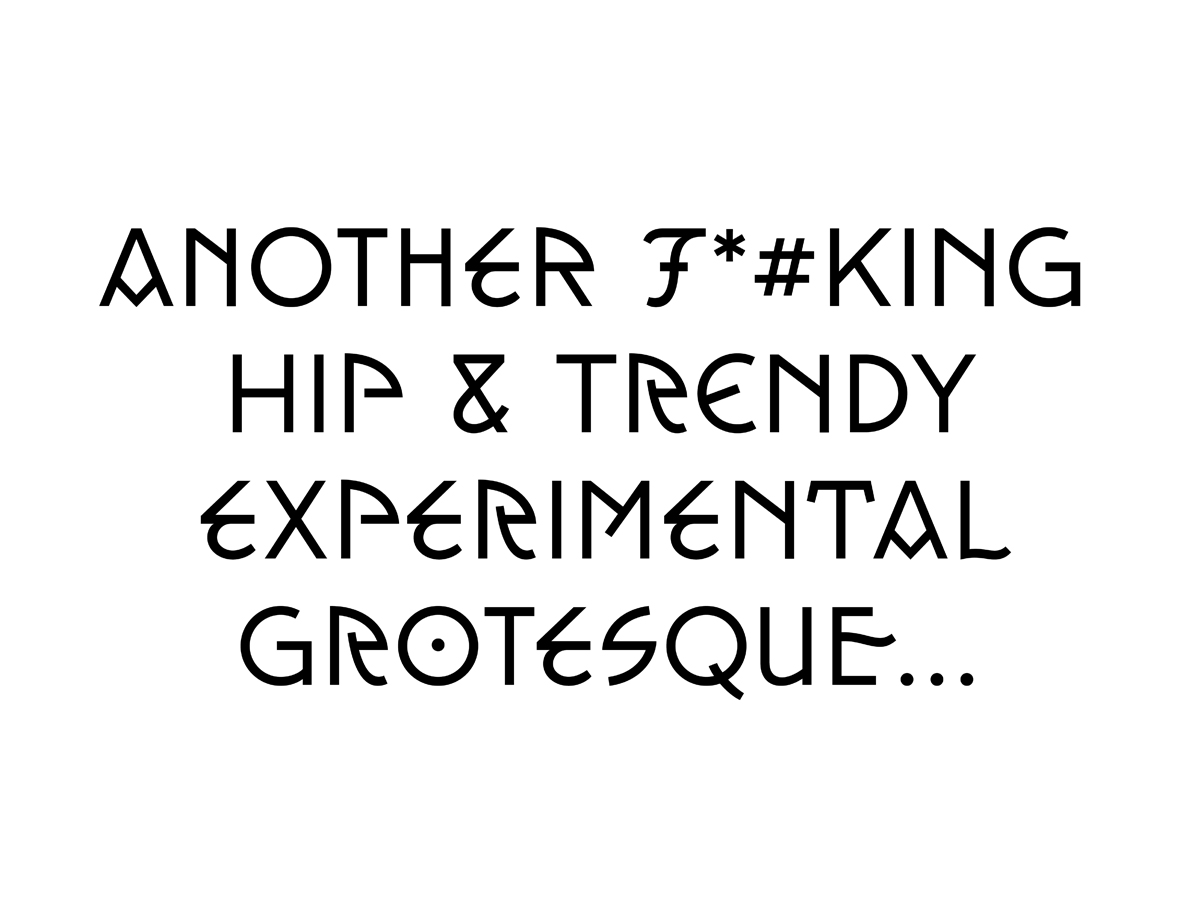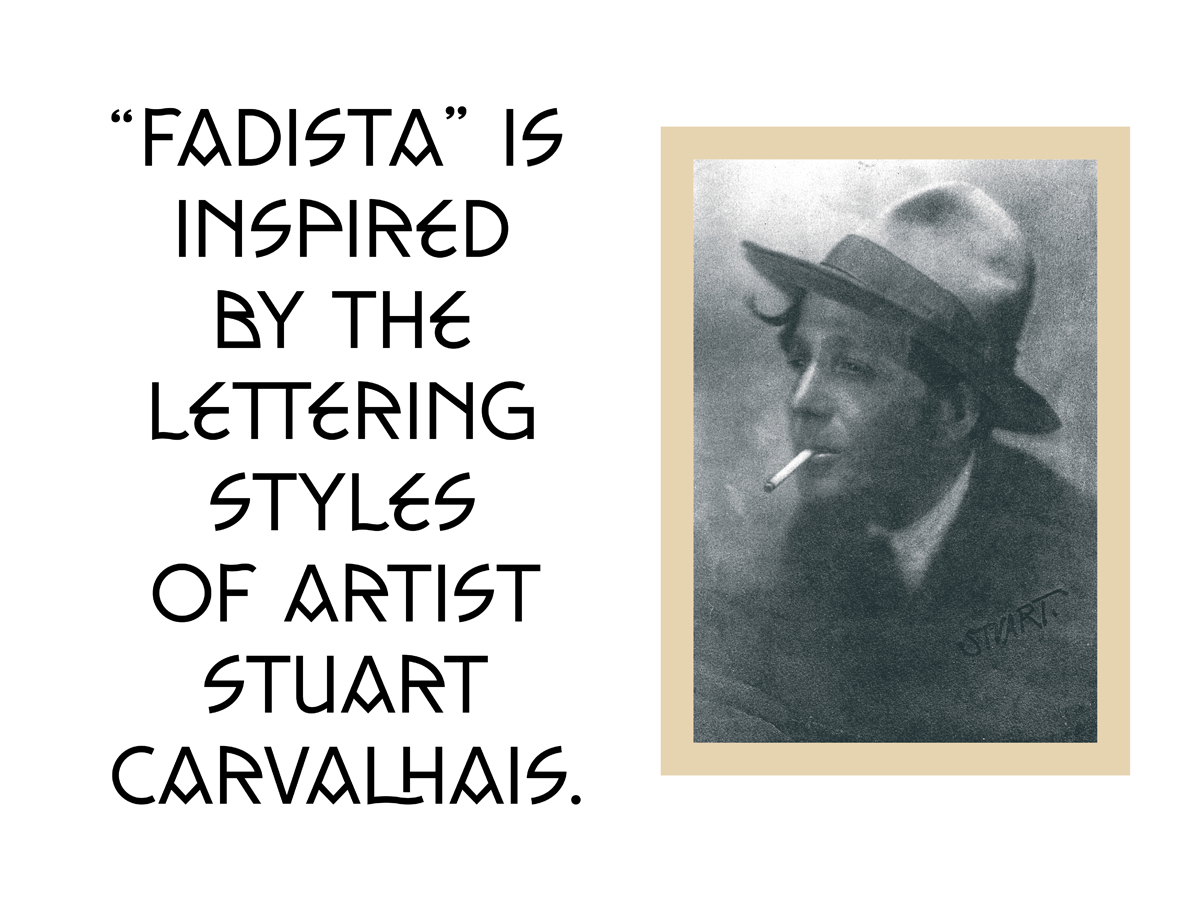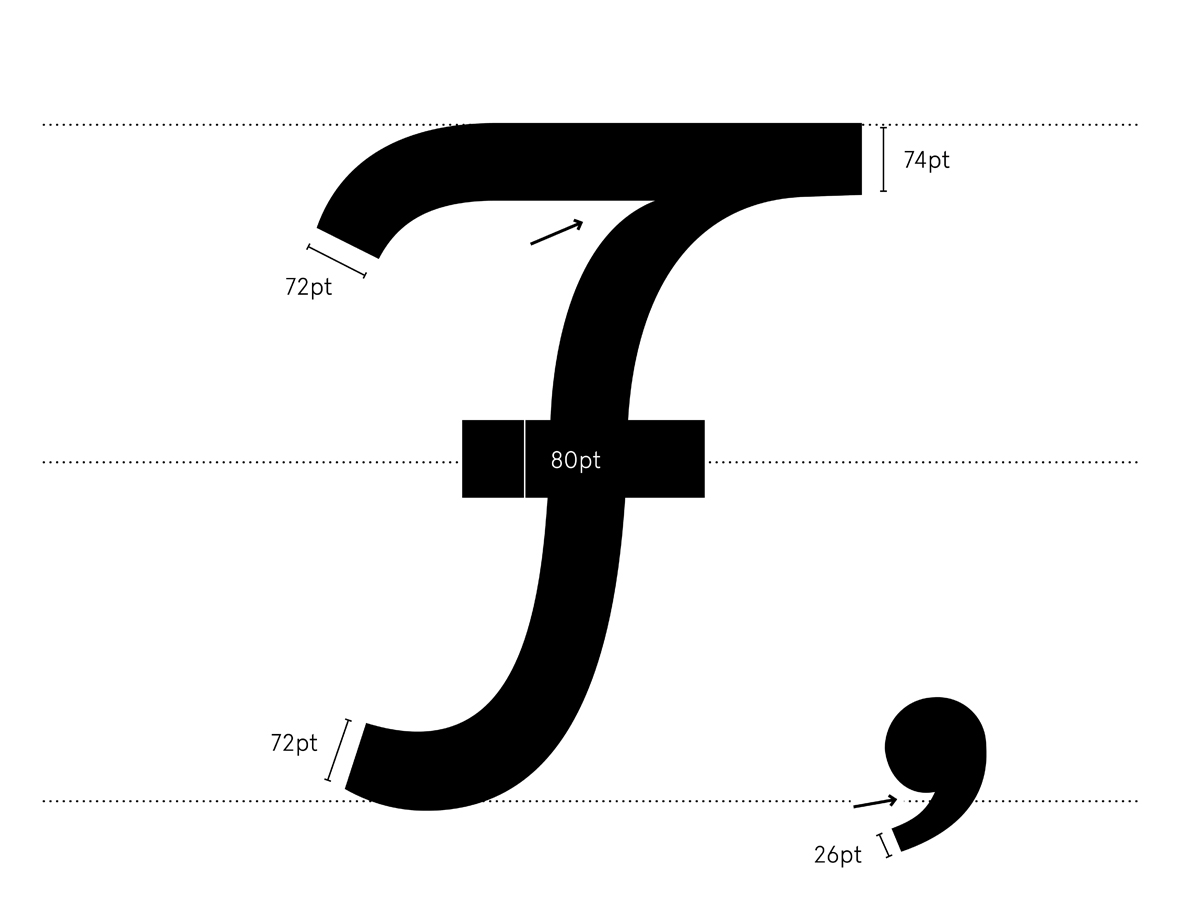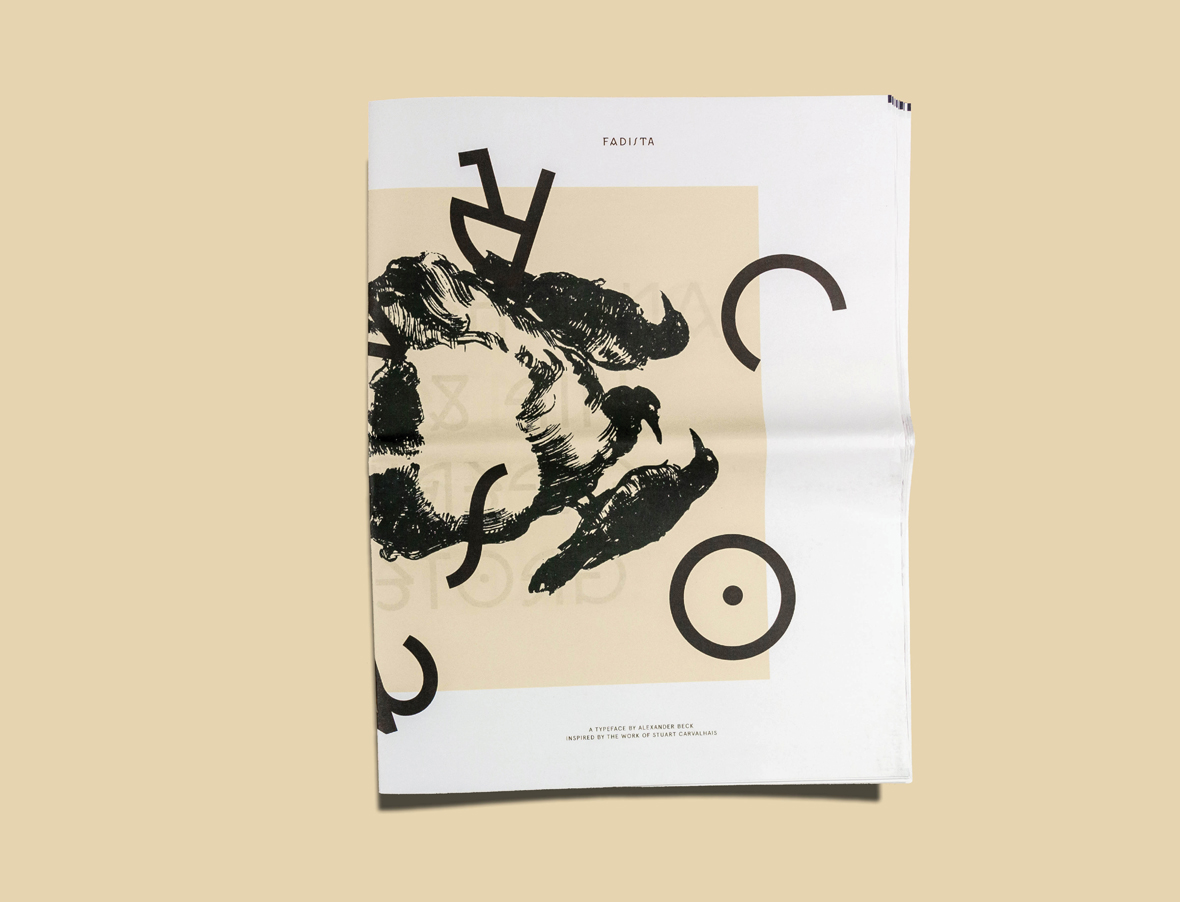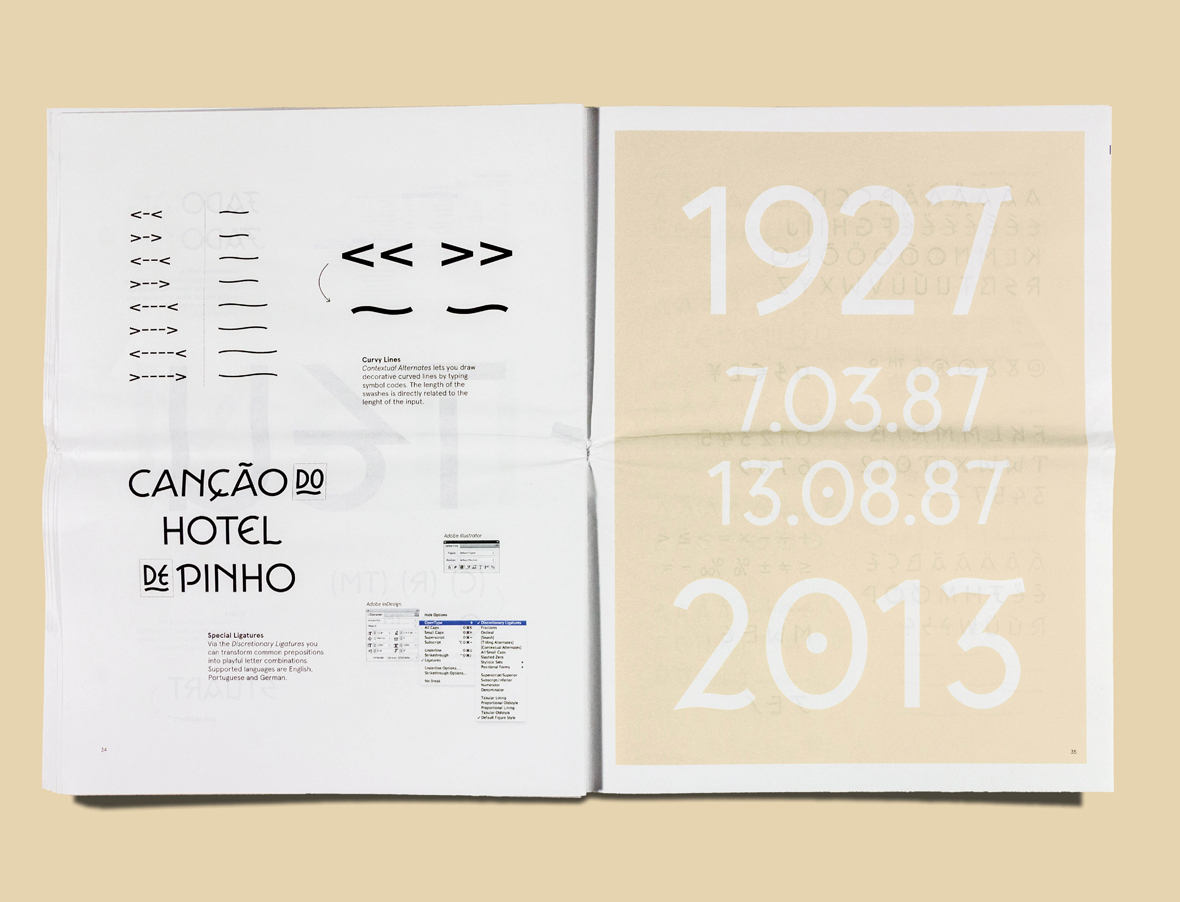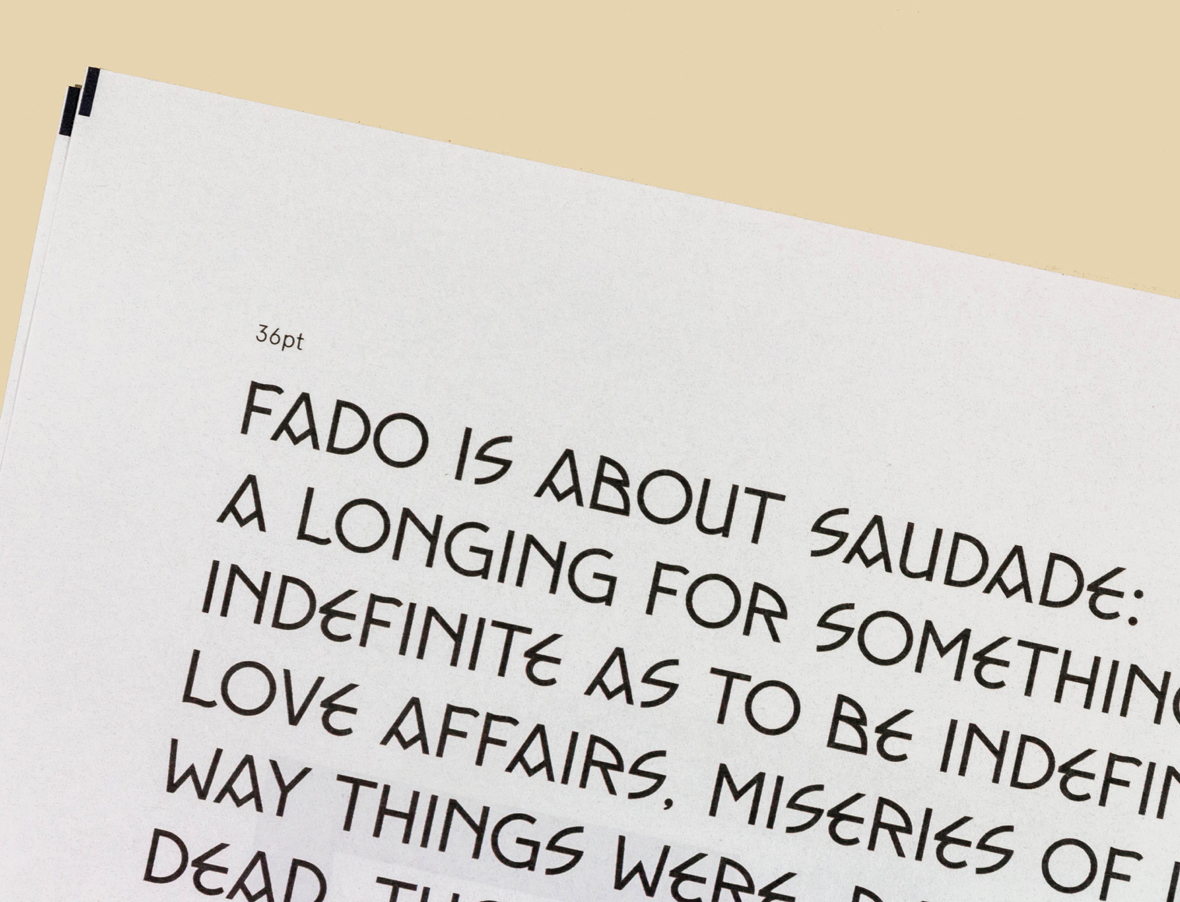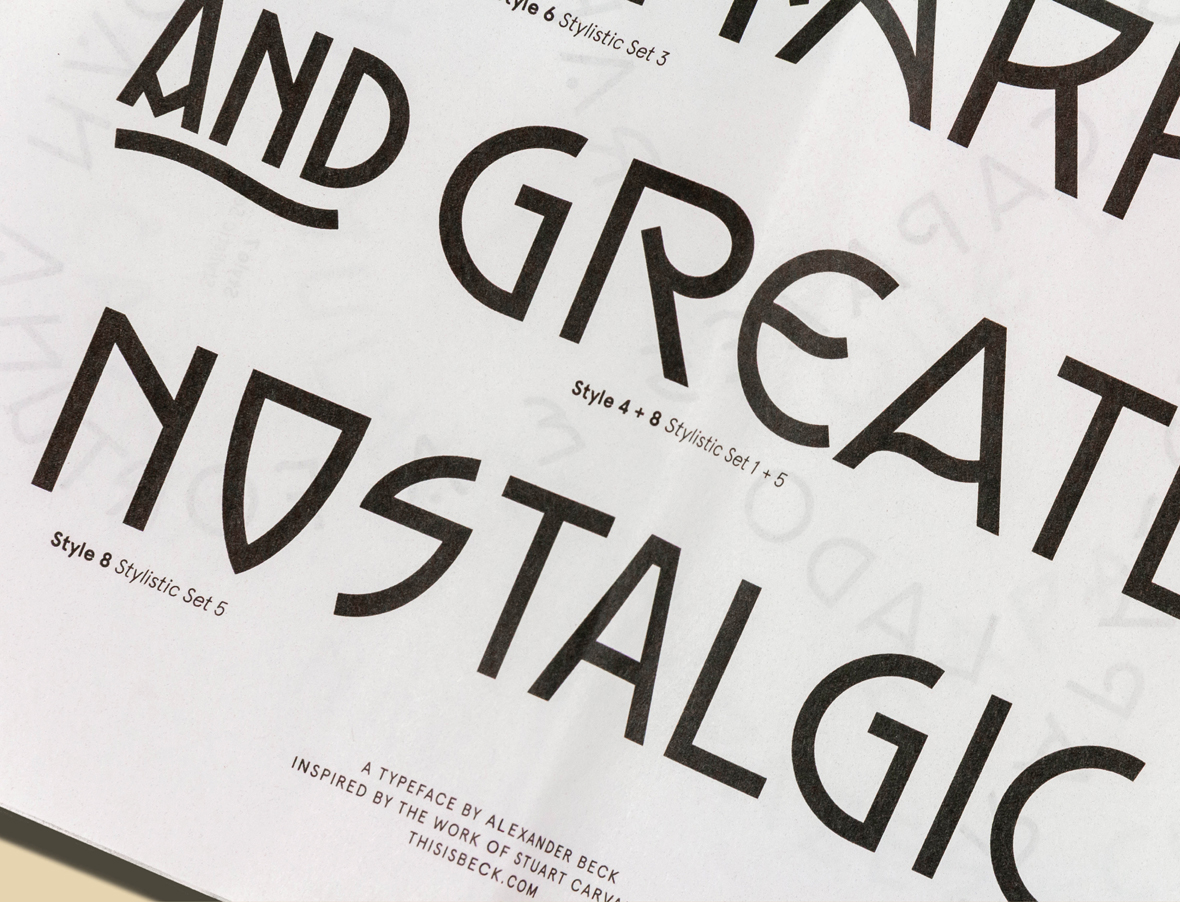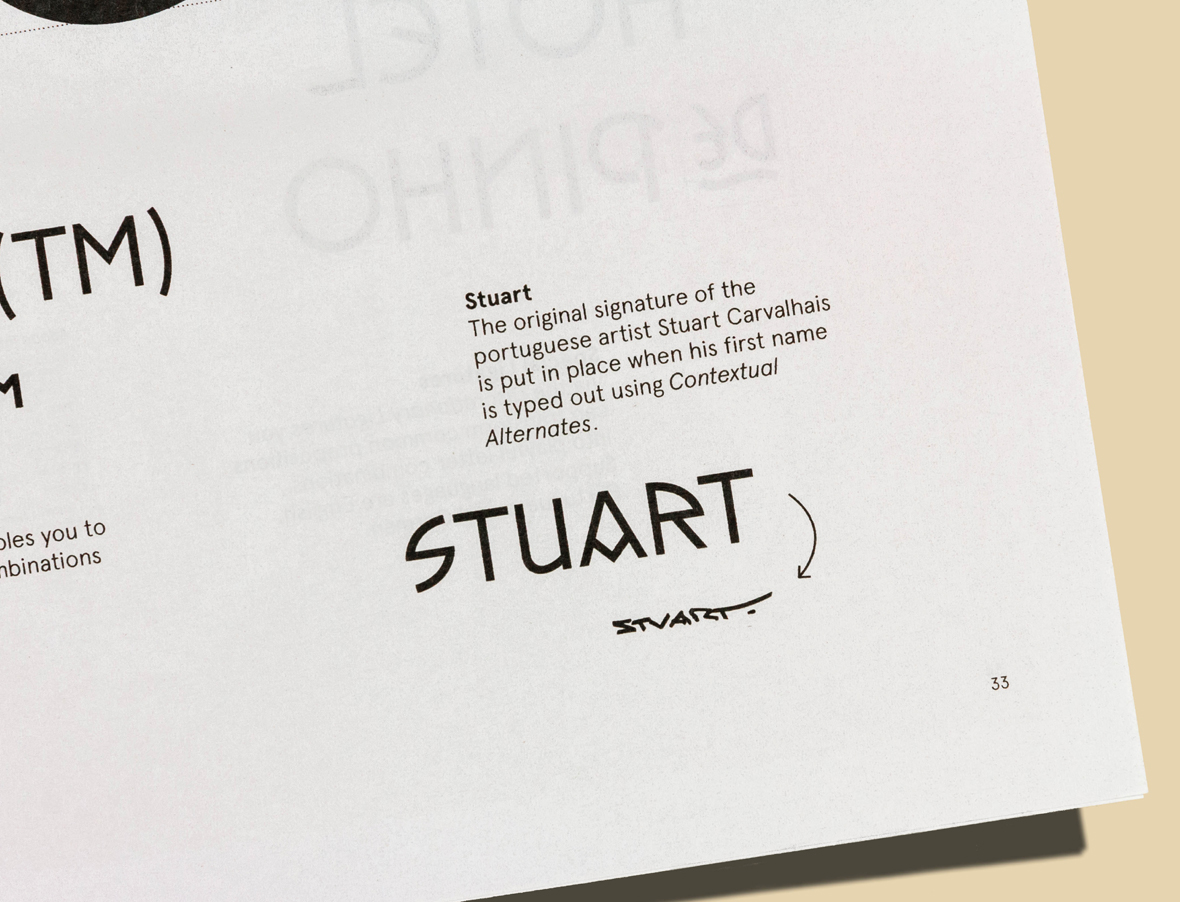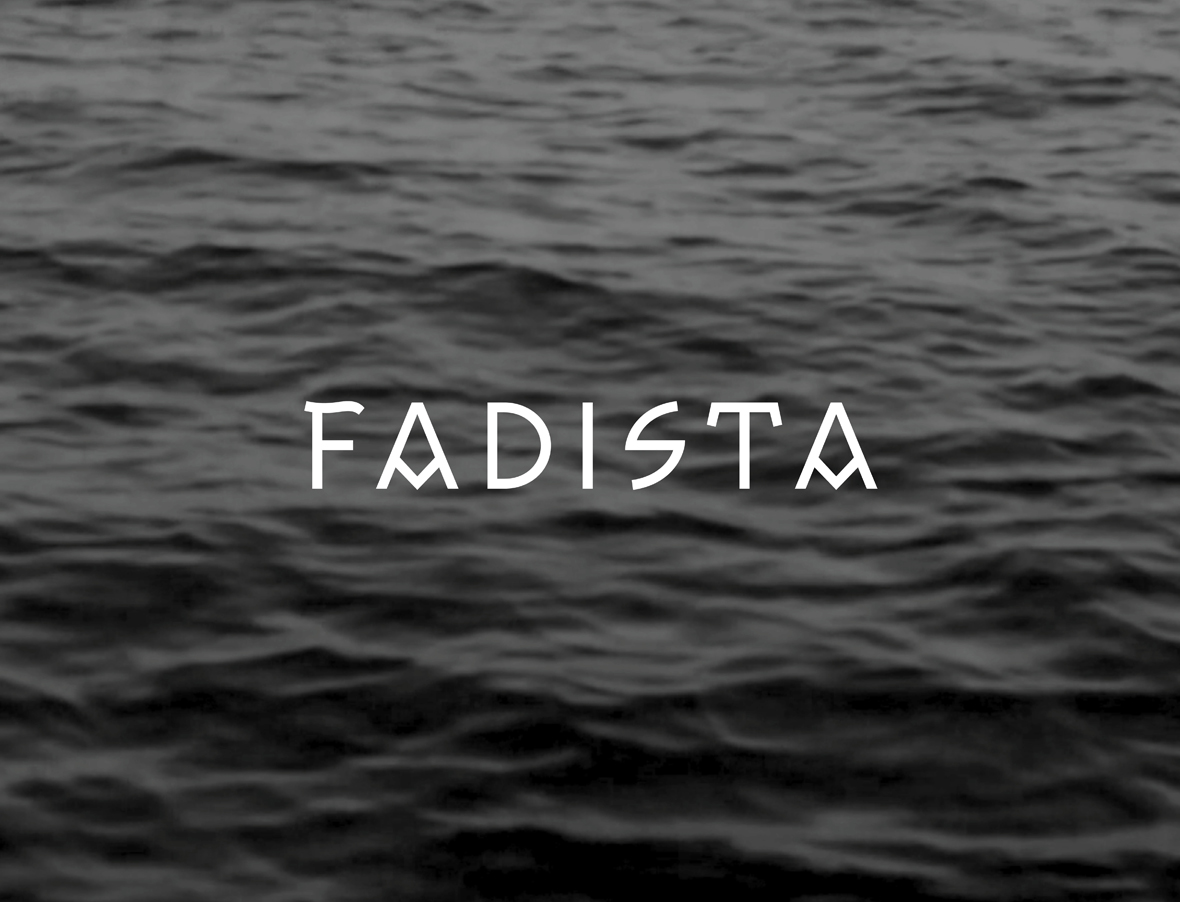
Fadista – Type Design
“Another f*#king hip & trendy experimental grotesque…, but from 1927?!”
Das Projekt “Fadista” behandelt die Entwicklung eines Fonts, basierend auf historischen Fundstücken der 20er und 30er Jahre. Als Vorbild dienen Letterings auf Musikpartituren des traditionellen portugiesischen Fado aus der Feder des Künstlers Stuart Carvalhais (1887–1961). Der entstandene Font ist das Resultat akribischer Analyse und Auswertung der charakterbildenden Gestaltungselemente des Schriftbildes im Original sowie der Formfindungsprozesse und Implementierung von stilistischen Untergruppen unter Berücksichtigung moderner Schriftstandards.
Die Neuinterpretation, im Kontrast zwischen historischem Bezug und zeitgenössischer Erscheinung, ist ein Diskurs über Ästhetik, Trends und Aktualität.
The project “Fadista” consists in a typeface, based on historical findings of the 20ies and 30ies. The main reference used were letterings on sheet music covers to the traditional portuguese fado created by artist Stuart Carvalhais (1887–1961). The final font is the result of a meticulous analysis and interpretation of the characteristical graphic attributes of the original letters, as well as the rearrangement of the glyph palette into stylistic subgroups taking into consideration modern font standards.
This reinterpretation, in between historic reference and contemporary appearance is a discourse about aesthetics, trends and actuality.
Alexander Beck
http://www.thisisbeck.com
Abschlussarbeit, Bachelor of Arts
FH Mainz 2013
Weblog
Die Qual der Wahl – Erfolg im Internet – die Auswahl der Webagentur
Entdecke die neuesten Trends in Damenmode: Stilvoll und zeitlos
E-Mail-Outreach betreiben: Die besten Tipps, um effektiv Entscheider zu erreichen
Festplatte abgestürzt – das sind die 3 häufigsten Gründe!
Werbebotschaften – der Motor für den Verkauf
Webdesign – was müssen Unternehmen beachten?
Welche Werbe- und Designtrends sind für 2024 zu erwarten?
To-go-Verpackungen mit Persönlichkeit
Die Vorteile eines eigenen Website-Servers: Das sind sie
Das richtige Produkt im Netz finden: Die Welt der SEO-Agenturen
Windows für Mac-Liebhaber: Die besten Tipps im Umgang
Ein praktischer Leitfaden für Marketer, die KI nutzen wollen
Vielfalt der Druckverfahren im Etikettendruck
Wie Design unser Leben beeinflusst
Warum mehrsprachiger Content unerlässlich für globale Marken ist
Designmöglichkeiten in Windows: So personalisierst du deinen Desktop
Instrumentenbau: Design trifft Handwerkskunst
Die Pop-Art Kunst wird wieder populär
